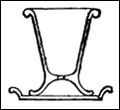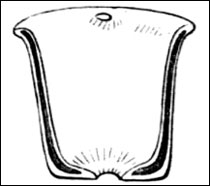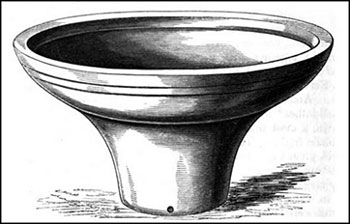
Journal of Horticulture, 1868
The past is full of a rich diversity of plants – and flower pots.
In his 1859 Manual of Practical Gardening, George Glenny wrote that “there is nothing half so good as the old-fashioned pots.” These looked just like the clay pots we use today except their rims were narrow. They were offered in 23 different sizes, starting with two-inch “thumbs” and increasing inch-by-inch all the way up to pots 24 inches across – a range you’re unlikely to find today at even the biggest big-box store.
Glenny describes other more unusual pots, too.
“Some pots have been made with feet to stand in saucers to keep the bottom drain-hole out of the water that runs through. . . .

Gardener’s Magazine, 1843
“Others have been made with hollow sides to be filled with water, that the sun may not burn the young fibers [roots] next the side.
“Some are made with gutters all round the top rim, that a glass shade may cover the plant; and the edge being in this gutter filled with water [which] excludes the air, these are admirably adapted for fern-growing in dwelling-houses, each being, so far as the plants are concerned, a small Wardian case [terrarium].”
Maybe most unusual was the verbena pot. Verbenas, introduced from South America in the 1820s, were wildly popular, and British potteries responded by developing a special pot to display their sprawling growth.

Garden Miscellany, 1858
“The body of the [verbena] pot is like another,” Glenny wrote, “but the upper part, occupying one-third of the whole height, they turn outwards and form a broad dish, giving us a surface, twelve or fourteen inches in diameter, on which we can spread and peg down the plant to cover the whole.
"It has been usual to grow them in large pots, and have a round wire about two inches above the pot, and so tie the plant down upon it to cover it. These [verbena] pots will doubtless become popular for that purpose. They are light, compared with a fourteen-inch pot, and yet possess all the advantages of one that size; and we must admit that the appearance is greatly before [i.e., better than] a platform of wire-work.”











